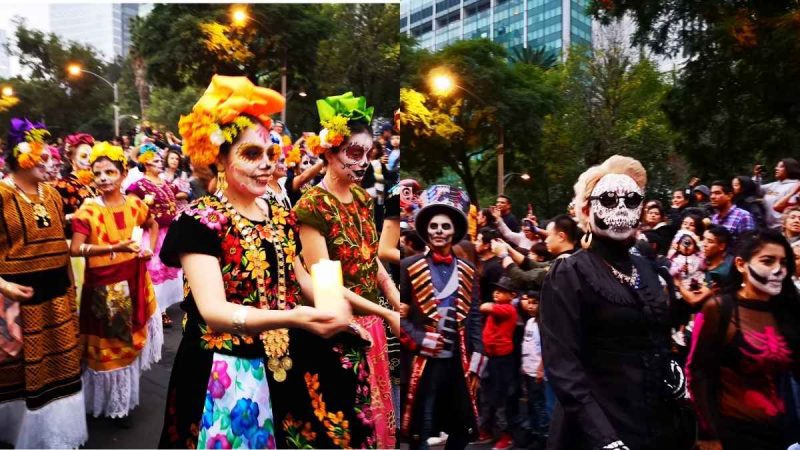Every year, as October fades into November, Mexico City blossoms into an extraordinary spectacle. Día de Muertos—Day of the Dead—fills the air with marigold scents, the echo of drumbeats, and vibrant colours. Día de Muertos is an ancient celebration, that blends the customs of the Aztecs with Spanish Catholic influences.
What Is The Day Of The Dead?
Unlike Halloween, Día de Muertos isn’t about frights and candy. Día de Muertos (Day of the Dead), which occurs at the beginning of November, is a significant annual celebration in Latin America, despite not being ‘Mexican Halloween’. It is customary for families to gather to pay respects to the deceased, but this is not a sombre event. Día de Muertos is an ancient celebration, blending the customs of the Aztecs with Spanish Catholic influences. Instead of sombre mourning, the holiday offers a beautiful perspective on death.
The people of Mexico light candles set up altars, and create ofrendas, personal altars overflowing with marigolds, photos, and favourite dishes of the departed. It’s a way to show that, while life may end, love does not. In Mexico City, these traditions find an even more elaborate home, where the whole city seems to pulse with life, colour, and memory. The parade is a feast for the senses: dancers clad in skeleton costumes, massive floats adorned with skulls and flowers, and Catrinas—skeletons in traditional Mexican garb—glide through the streets.
How Is It Celebrated?
Families will have supper with their ancestors on the night of November 1st, also known as the Noche de Animas, or Night of the Souls in Purgatory. During that time, they would also clean the graves and adorn them with intricate candle and marigold displays. Some will sleep amid the tombstones at night. As skull-shaped floats roll through the streets of Mexico City to the beat of Aztec drums, parade participants will be dressed in vibrant costumes and wearing enormous skull masks. From Bellas Artes, the Palace of Fine Arts, to the main square of the Zócalo, downtown will be a flurry of marigolds, skull-painted faces, and swishing skirts. The combination of Indigenous, European, and particularly Mexican practices characterise this festival now.
For anyone lucky enough to witness it in Mexico City, Día de Muertos is a celebration to witness!
Cover image credits: Canva

